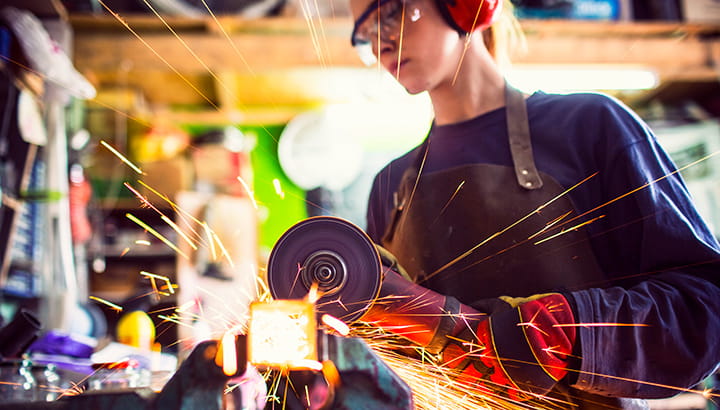
Several European countries have recently lowered their national chrome-6/chrome (VI) limit values, in some cases down to 0,001 mg/m3. That is a rather sharp reduction from the already comparatively low EU limit value of 0,005 mg/m3. This development has probably only just begun, and we can expect these limit values to decrease even further in the years to come – not only in Europe. So, what measures can companies take to adapt to these new regulations, and protect their personnel from chrome-6 exposure?
Chrome-6, also known as hexavalent chromium, chrome (VI) or Cr(VI), is one of the most common forms of this chemical element. It is present in many industrial processes where stainless steel is heated up, including chrome plating, welding, laser cutting and leather tanning. When the steel is heated up above its boiling point, fumes are created; fumes that contain concentrations of hazardous substances.
Repeated exposure to chrome-6 can cause several respiratory conditions, such as asthma, bronchitis, and lung cancer. Recent reports indicate a possible connection between chrome-6 and liver cancer and kidney cancer as well.
Chrome-6 is also present in nature, especially in the water supplies of certain geographical areas. This further underlines the importance of minimizing its presence in work environments, if the production process gives rise to chrome-6.
In 2017, the European Union decided on a maximum limit value for chrome-6: 0,005 mg/m3. The United States decided on the same limit value in 2006. In Europe, countries like the Netherlands, France and Denmark recently lowered their national chromium limit values to 0,001 mg/m3. Denmark is one of the countries that have plans for further reductions in the years to come. If it proves technologically, economically and measurably possible, the Danish government expects to reduce the limit value to 0,00025 mg/m3 in 2024.
More and more countries will likely introduce increasingly strict regulations not just on chrome-6, but other hazardous substances as well. This will require industrial companies to be responsive, and implement the changes necessary to ensure their workers’ safety.
At Nederman, we have a long history of helping our customers achieve and maintain low chrome-6 levels, and of innovating and installing fume extraction systems for different applications and industries. You can find many other, related articles on welding fume extraction and prevention in the workshop, robotic welding, and the risks posed by hazardous fume here in the Nederman Knowledge Center.
We have extensive experience of various challenges in the different industries and our experts are very skilled, helpful and professional. With us, you can feel secure that we take care of you and your needs. You are always welcome to contact us regardless if you have a short question or a more complex and complicated one. A warm welcome to Nederman.
Contact us here